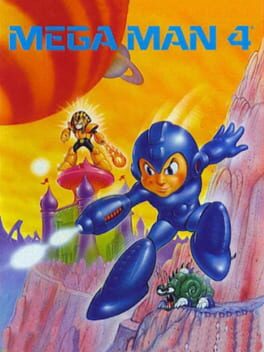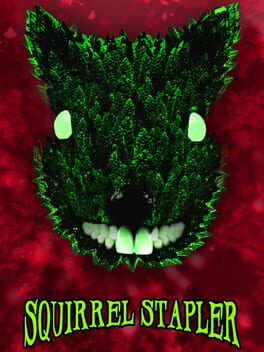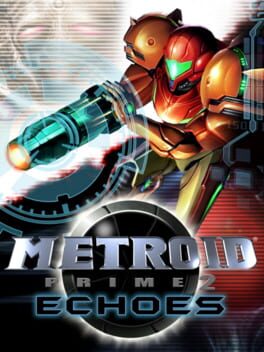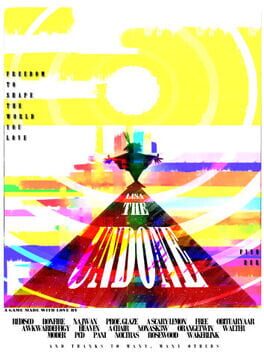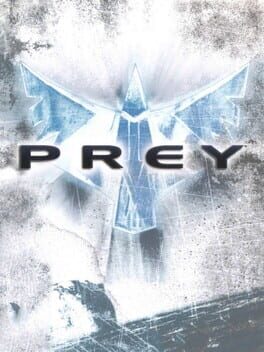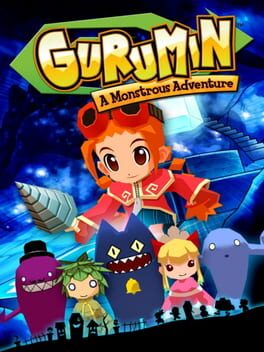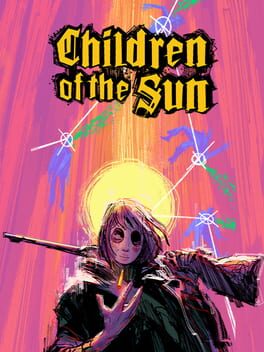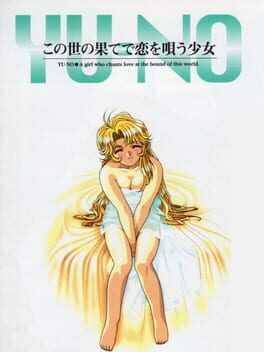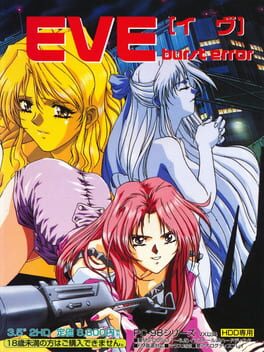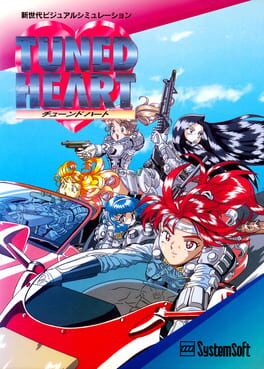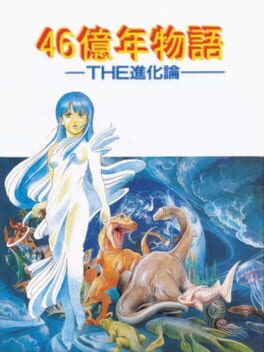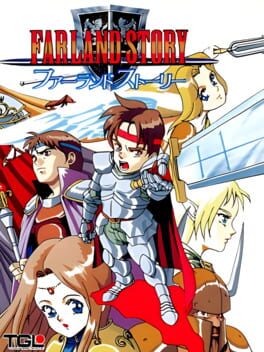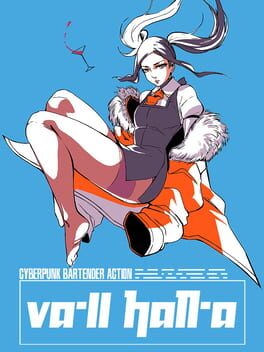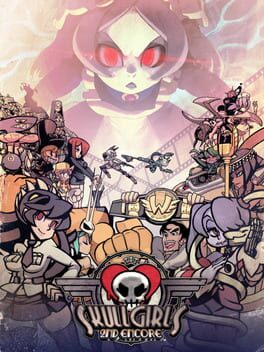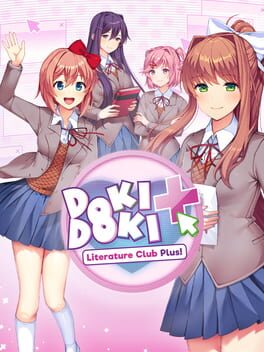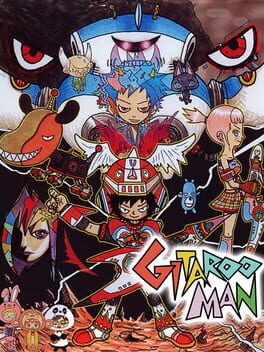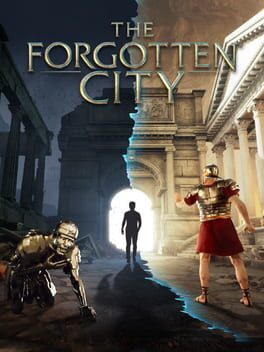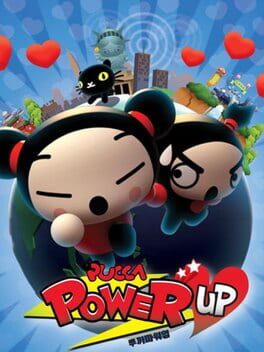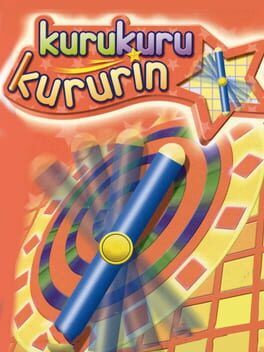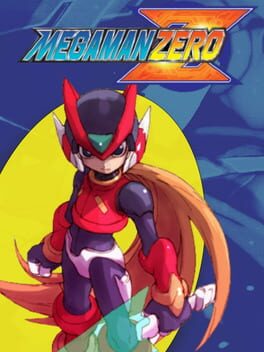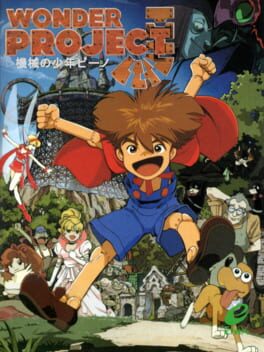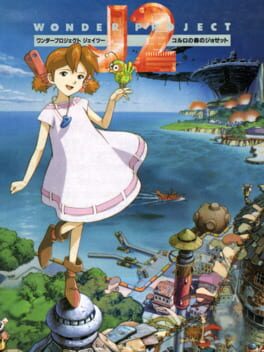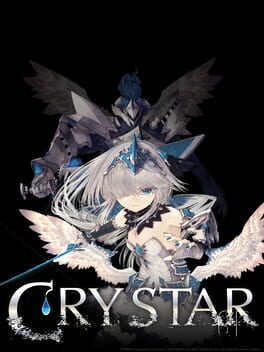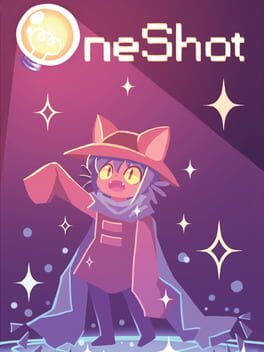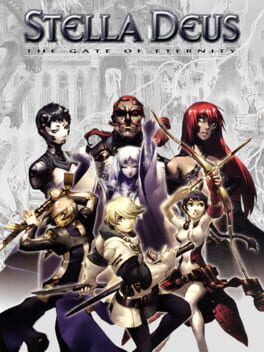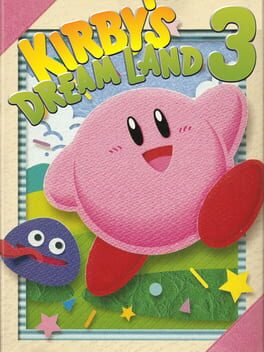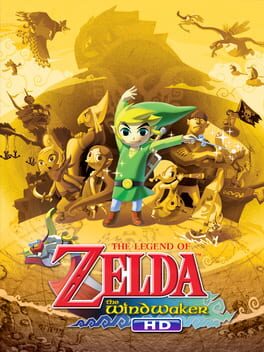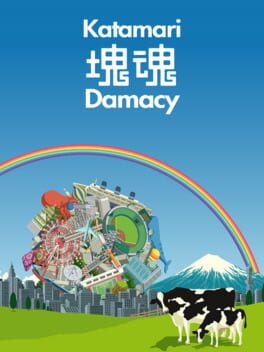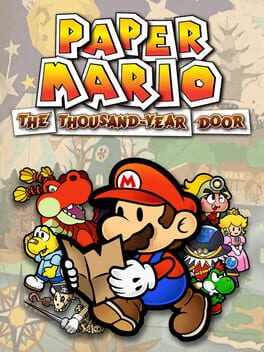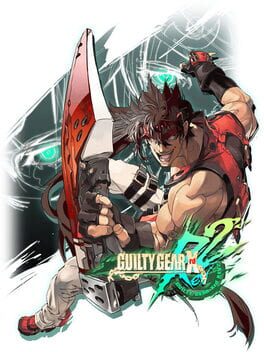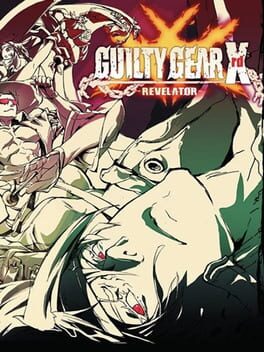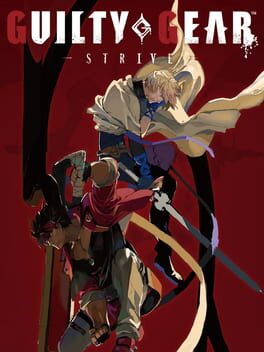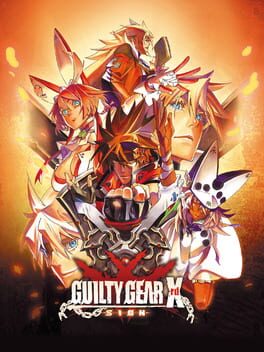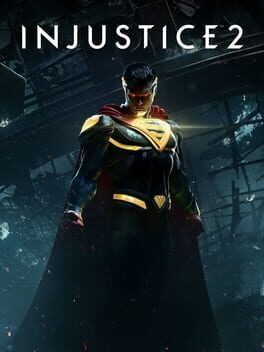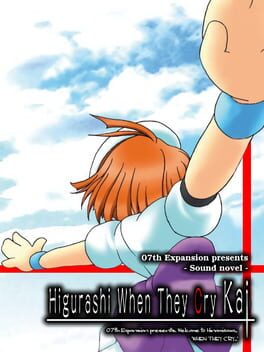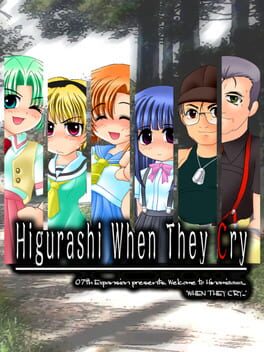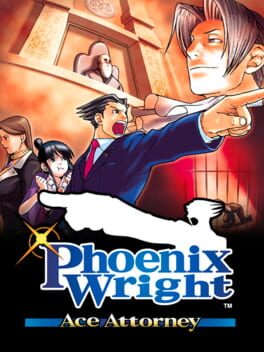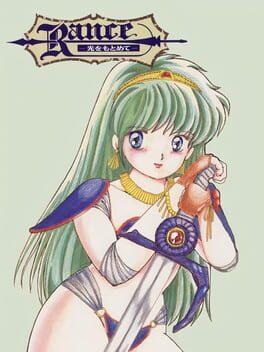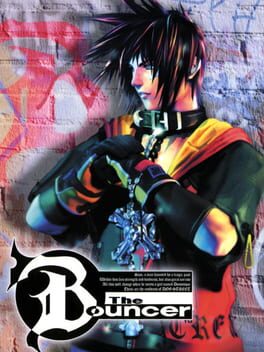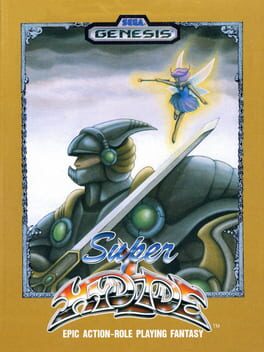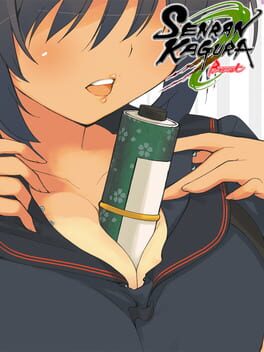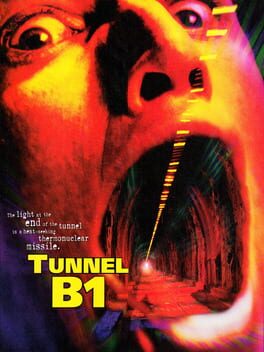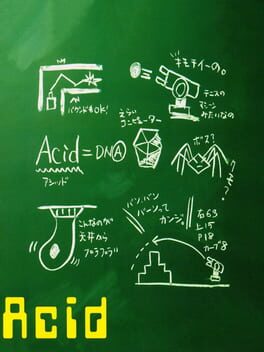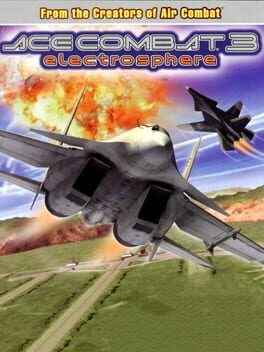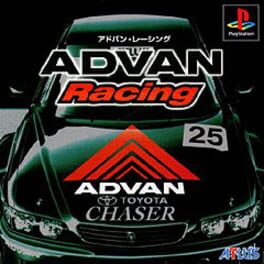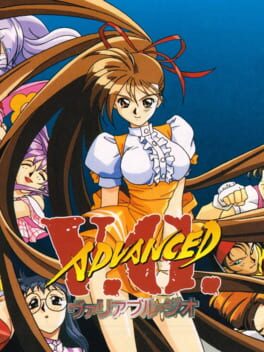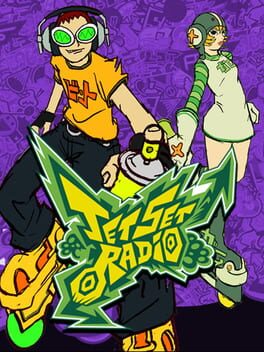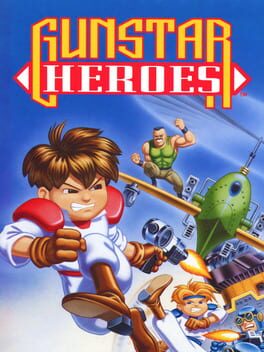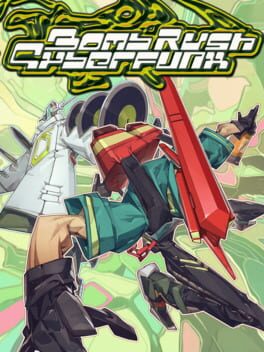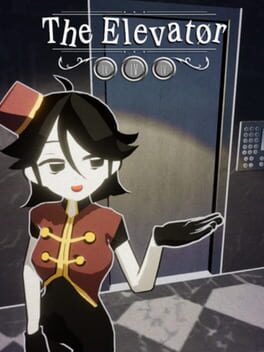ThatOneGuy
400 reviews liked by ThatOneGuy
Mega Man 4
1991
Let me get this out of the way first... breathes in... - THEY ADDED AN ACTUAL WEAPON SELECT SCREEN! I don't know why that excited me so much, but it did. No more dumb initials on the lower half of the screen. A full screen menu with actual weapon names this time. Anyway, moving on...
I'm happy to report that MM3 was not just simply a case of series fatigue, but rather just a case of subpar level design. MM4 doesn't feature as much innovation, but that's okay, because the level design here is pretty darn good - maybe even surpassing MM2's for me. I like how the second half was divided into two castle stages. Sure, it's still a test of endurance, but unlike MM3, I really liked the bosses in these castle stages for the most part.
This game features the addition of the upgraded Mega Buster, which allows you to charge up a more powerful shot. This was pretty helpful for taking down a handful of bosses more quickly if you happen to run out of energy on another weapon. But there's actually one thing I wish they had kept from MM3... free movement with Rush Jet is no longer a thing. Terrible. Disgusting. If I was a spiteful person, I'd take away an entire star just for that. But I digress, this is a great game. Definitely has similar replay value to 2, but overall this is the better game, I feel.
I'm happy to report that MM3 was not just simply a case of series fatigue, but rather just a case of subpar level design. MM4 doesn't feature as much innovation, but that's okay, because the level design here is pretty darn good - maybe even surpassing MM2's for me. I like how the second half was divided into two castle stages. Sure, it's still a test of endurance, but unlike MM3, I really liked the bosses in these castle stages for the most part.
This game features the addition of the upgraded Mega Buster, which allows you to charge up a more powerful shot. This was pretty helpful for taking down a handful of bosses more quickly if you happen to run out of energy on another weapon. But there's actually one thing I wish they had kept from MM3... free movement with Rush Jet is no longer a thing. Terrible. Disgusting. If I was a spiteful person, I'd take away an entire star just for that. But I digress, this is a great game. Definitely has similar replay value to 2, but overall this is the better game, I feel.
Buckshot Roulette
2023
Buckshot Roulette is a short and simple game of shotgun Russian Roulette between you and a… thing that calls itself “The Dealer”. The Dealer loads up the shotgun with a random number of shells and blanks, and you each take turns shooting the shotgun at either yourselves or your opponent. If you opt to shoot yourself, your opponent’s turn is skipped. You’re each hooked up to a defibrillator with a certain amount of charges that will bring you back to life if you get shot, but there is a limited number of times the defibrillator can be used. The game ends when either you or The Dealer run out of chances to use the defibrillator.
The game does spice things up a little bit by giving you items at the beginning of rounds that you can utilize to help yourself get an advantage. You can get a knife to saw off the end of the shotgun which causes it to do twice the amount of damage, a magnifying glass which lets you peek and see what round is currently loaded into the gun, handcuffs that prevent your opponent from taking a turn, a can of beer that lets you eject whatever round is currently loaded, and a pack of cigarettes that will restore a chance to use the defibrillator. However, The Dealer is also given these exact same items. This adds another layer of strategy to the game, where you’ll have to think about when you want to use the items you’re given, while also considering the items The Dealer has and when they will use them as well.
The game has a pretty cool, yet measured concept. Despite how intriguing The Dealer and the setting are, there isn’t really a narrative to speak of. If you win, you get a results screen and a case full of money. That’s all. The game itself can be figured out pretty easily and beaten in about 30 minutes. The core gameplay, while decent, doesn’t make for something that’s especially replayable in my opinion. I love its low-poly artstyle, and I really dig the techno track that plays in the background. Its presentation in general is really strong and immersive, especially given the game’s setup.
There’s just not a whole lot to this game, which is its only real issue. I had managed expectations going into Buckshot Roulette. I didn’t think that it’d be anything mindblowing considering it’s on sale for $3 on Steam (actually, I guess it technically is mindblowing now that I think about it…). I expected a short, but decent time and that’s exactly what I got. It’s a fun little flavor of the month type of indie game that I do think is worth the $3. Just know ahead of time that you’re really not going to get a whole lot of mileage with it.
The game does spice things up a little bit by giving you items at the beginning of rounds that you can utilize to help yourself get an advantage. You can get a knife to saw off the end of the shotgun which causes it to do twice the amount of damage, a magnifying glass which lets you peek and see what round is currently loaded into the gun, handcuffs that prevent your opponent from taking a turn, a can of beer that lets you eject whatever round is currently loaded, and a pack of cigarettes that will restore a chance to use the defibrillator. However, The Dealer is also given these exact same items. This adds another layer of strategy to the game, where you’ll have to think about when you want to use the items you’re given, while also considering the items The Dealer has and when they will use them as well.
The game has a pretty cool, yet measured concept. Despite how intriguing The Dealer and the setting are, there isn’t really a narrative to speak of. If you win, you get a results screen and a case full of money. That’s all. The game itself can be figured out pretty easily and beaten in about 30 minutes. The core gameplay, while decent, doesn’t make for something that’s especially replayable in my opinion. I love its low-poly artstyle, and I really dig the techno track that plays in the background. Its presentation in general is really strong and immersive, especially given the game’s setup.
There’s just not a whole lot to this game, which is its only real issue. I had managed expectations going into Buckshot Roulette. I didn’t think that it’d be anything mindblowing considering it’s on sale for $3 on Steam (actually, I guess it technically is mindblowing now that I think about it…). I expected a short, but decent time and that’s exactly what I got. It’s a fun little flavor of the month type of indie game that I do think is worth the $3. Just know ahead of time that you’re really not going to get a whole lot of mileage with it.
Sonic Adventure
1998
I was born too late for the SEGA Dreamcast, but I was born just in time for the Nintendo GameCube, and one of my favorite games growing up was Sonic Adventure DX: Director’s Cut. I loved this game immensely growing up, and I played and replayed it over and over again, to the point where the disc wore out and stopped working. As the years went by, and I got older and came to play a wider variety of games, I eventually stopped enjoying Sonic games as much as I used to when I was little, to the point where nowadays I view the franchise with nostalgic indifference. It’s something that I definitely used to love and I might check in on occasionally, but it rarely occupies a space in my brain these days. Recently, those feelings of nostalgia took hold of me when I learned about how the DX version of Sonic Adventure was apparently a lot worse in comparison to the original. I read that it introduced new bugs and glitches, and it changed the game’s overall visual style for the worse. So, out of curiosity, and because I wanted to be reminded of old times, I decided to emulate the original Sonic Adventure to see how much better it actually was in comparison to the allegedly maligned DX version, and in all honesty, I don’t really think that DX is as much of a downgrade as I was led to believe. The game itself wasn’t as much of a fun nostalgia ride as I’d hoped it’d be, either.
Dr. Eggman has returned with a new plan for world domination, and this time he’s in command of a creature known as Chaos, a liquid monster who grows more powerful and changes shape after being fed the legendary Chaos Emeralds. Sonic and company all get involved with Eggman’s plot in some fashion, as they attempt to stop him from feeding Chaos all seven emeralds and wrecking untold havoc upon the world. You play as Sonic and five other characters, each with their own style of gameplay and personal narratives that occasionally crossover with one another.
I have to admit, reviewing this game is rather difficult for me. I played DX growing up so much that I know the game like the back of my hand. I’m used to the physics, I’m used to the boss fights, I know where I’m supposed to go and when, I can quote so many voice lines… basically I can play this game almost without thinking. There may be aspects of the game that I find easy that other people might struggle with. Sonic Adventure is a bit of a finicky game, and getting acclimated to how the game feels and controls may not come as naturally to others as it comes to me. Once you get used to it though, the whole game is very much a walk in the park. Each character shares the same core controls, but they also have their own abilities which make them unique.
Sonic’s campaign is by far the most fun in the game, and clearly where the most attention was given. His stages simply take the speed focused platforming approach of the 2D games and apply it to levels made in 3D. Sonic’s stages are often long and made up of multiple sections with a variety of different environments and music tracks for each section. Sonic for the most part feels pretty good to control, especially when you manage to get him going at higher speeds. The biggest problem that I have both with Sonic’s stages and with the game in general is easily the awful camera. The camera often acts like it has a mind of its own, and when Sonic or other characters go at high speeds, it often can’t keep up with them, or it’ll get stuck on level geometry, freak out, and prevent you from seeing where you’re going. The only times I ever died during my replay of this game was when these camera issues happened, and they happen most frequently when you’re going at high speeds through tunnels like in Sky Chase or Speed Highway. Sometimes to get the camera under control, you just gotta slow down and give it a second to catch up, which can be annoying, but it’s not the worst.
As mentioned, the rest of the cast all have their unique styles of gameplay, but for the most part, they all reuse various sections of Sonic’s stages. Some characters have sections of stages unique to them, and there is one stage (Hot Shelter) that Sonic doesn’t have that other characters do, but 95% of the other characters’ stages are reused or slightly edited sections of Sonic’s stages, and their gameplay for the most part isn’t different or interesting enough to really feel substantial. Playing as the other characters can feel rather repetitive and boring as a result.
Tails is easily the best example of this. His stages involve racing an AI-controlled Sonic through chopped up sections of Sonic’s stages. Tails can’t run as fast as Sonic, but he can fly, and there are these booster rings he can fly through that allow him to take shortcuts that Sonic can’t utilize himself. It’s never a challenge to outpace Sonic, and Sonic can sometimes get stuck on level geometry and not even advance forward at all until he rubber bands and teleports right next to you in order to catch up.
Knuckles’ stages have him searching for broken pieces of the Master Emerald. His ability to glide and climb walls allows him to explore stages in a way Sonic can’t, making the stages themselves a lot more open and exploration focused. His gameplay is different enough from Sonic’s that replaying stages isn’t really that big of a deal. His stages are my next favorite after Sonic’s.
Amy’s campaign is surprisingly fun. Amy has to flee from an invincible robot called Zero, which chases her across all of her stages. Amy’s on the slower side, but she has her own special movement abilities and attacks she can perform with her Piko Piko Hammer to make up for it. She also has the most unique content compared to the other playable characters that aren’t Sonic, as she has sections of Sonic’s stages that he doesn’t get to experience himself, such as the fun house in Twinkle Park. My only complaint is that she has the least amount of stages in the game (three in total).
Then there’s Big’s campaign… Big has always been rather infamous when it comes to discussions surrounding this game. As opposed to every other character’s gameplay, which is generally focused on exciting action, or high speed setpieces, Big the Cat’s gameplay involves fishing for his pet frog named Froggy. There are pools of water in stages that are occupied by Froggy as well as other fish, and you have to catch Froggy in order to clear Big’s stages. I think it’s pretty understandable why people don’t care for Big’s campaign. His gameplay is so different from everyone else’s, and if you want to complete the story, you have no choice but to do them. The fishing itself isn’t especially fun either, and it can be confusing because the game itself doesn’t really explain how fishing works. I remember being so frustrated and angry with Big’s levels as a kid because I didn’t know what I was supposed to do, and didn’t realize that you needed to flick the control stick down whenever Froggy bites onto the lure in order to actually hook him onto it so that you can start reeling him in. To the game’s credit, fishing is explained in the game’s instruction booklet (both this version and DX’s), so it’s a bit hard to blame it for not telling you what you’re supposed to do. That doesn’t change the fact that the fishing itself is still not particularly engaging. At the very least, it’s not difficult at all once you figure out how it works.
Finally, there’s E-102 Gamma’s campaign. Gamma is a robot built to serve Dr. Eggman. His stages involve running and gunning, blasting enemies and obstacles and defeating a boss at the end of each stage. I don’t really know how else to describe Gamma’s stages other than braindead. That might sound a bit harsh, but I genuinely can’t think of any other way to put it. You hold down the action button to target obstacles, wait to target as many as you can, and then Gamma will fire auto-homing shots to destroy targets. It’s also hilariously easy to just stun lock all of the bosses at the end of Gamma’s stages and keep them from fighting back at all.
The story, much like the gameplay, is ambitious, and I do actually think it’s executed well enough. However, the horrible dialogue and the stilted 90’s voice acting can really knock the wind out of its sails. It’s charming enough to find it funny, but very much in a “so bad it’s good” kinda way. Eggman’s voice actor is an exception though. Deem Reginald Bristow actually kills it with his performance. It’s really lively compared to every other character in the game, and he sounds like he’s honestly having a lot of fun with the role, as opposed to everyone else, who just sounds like they’re phoning it in.
By far the best part about this game is its soundtrack. God, to this day nothing really hits me like this game’s soundtrack. It’s honestly pretty damn close to perfect. Each track just adds so much to the immersion of each stage, while also being immensely groovy or electrifying songs on their own. Some of my favorite tracks include Run Through the Speed Highway, Red Hot Skull, and Pleasure Castle, but in all honesty, pretty much every single song is a banger, and aside from maybe some of the vocal tracks, it’s really difficult to find a song that isn’t great in this game.
As for how this compares to the DX version, I think that visually, environments look a lot more appealing in comparison. The textures in the Dreamcast version are a lot more colorful, and places like the Mystic Ruins look far more lush and appealing. Other than that though, I’ll be honest: I don’t think that this version has much else that makes it worth playing over DX. For the sake of making a good faith comparison, I did play through a chunk of Sonic’s levels really quickly in DX to see if I could run into any obvious bugs or glitches, but I didn’t encounter anything, and I don’t ever recall running into any particularly notable glitches in the DX version during the several playthroughs of it when I was a kid. If anything, I feel like I still prefer DX a bit more because it has a free camera option you can turn on during stages, which is a huge blessing since the auto camera is so terrible. You can also skip cutscenes in DX which is super convenient. I feel like the glitches and bugs of DX are overblown, it seems like you really gotta go out of your way to experience them. You could argue that since I didn’t play DX from beginning to end that I’m not making a fair comparison, and y’know what, I won’t argue with you. I just really don’t have it in me to play this game from front to back a second time.
It’s clear that there was a lot of passion and ambition that went into Sonic Adventure and I have nothing but respect for that. I feel like this is one of the most experimental games I’ve ever played, especially for its time. It’s just that not all of its ideas pan out very well, and it causes the game to feel bloated and boring at times. Sonic Adventure, no matter which version I play, is always going to be a big source of nostalgia for me, and I’ll definitely treasure those memories I had of playing the game as a kid. But it’s impossible to deny how rough and flawed the game truly is.
Dr. Eggman has returned with a new plan for world domination, and this time he’s in command of a creature known as Chaos, a liquid monster who grows more powerful and changes shape after being fed the legendary Chaos Emeralds. Sonic and company all get involved with Eggman’s plot in some fashion, as they attempt to stop him from feeding Chaos all seven emeralds and wrecking untold havoc upon the world. You play as Sonic and five other characters, each with their own style of gameplay and personal narratives that occasionally crossover with one another.
I have to admit, reviewing this game is rather difficult for me. I played DX growing up so much that I know the game like the back of my hand. I’m used to the physics, I’m used to the boss fights, I know where I’m supposed to go and when, I can quote so many voice lines… basically I can play this game almost without thinking. There may be aspects of the game that I find easy that other people might struggle with. Sonic Adventure is a bit of a finicky game, and getting acclimated to how the game feels and controls may not come as naturally to others as it comes to me. Once you get used to it though, the whole game is very much a walk in the park. Each character shares the same core controls, but they also have their own abilities which make them unique.
Sonic’s campaign is by far the most fun in the game, and clearly where the most attention was given. His stages simply take the speed focused platforming approach of the 2D games and apply it to levels made in 3D. Sonic’s stages are often long and made up of multiple sections with a variety of different environments and music tracks for each section. Sonic for the most part feels pretty good to control, especially when you manage to get him going at higher speeds. The biggest problem that I have both with Sonic’s stages and with the game in general is easily the awful camera. The camera often acts like it has a mind of its own, and when Sonic or other characters go at high speeds, it often can’t keep up with them, or it’ll get stuck on level geometry, freak out, and prevent you from seeing where you’re going. The only times I ever died during my replay of this game was when these camera issues happened, and they happen most frequently when you’re going at high speeds through tunnels like in Sky Chase or Speed Highway. Sometimes to get the camera under control, you just gotta slow down and give it a second to catch up, which can be annoying, but it’s not the worst.
As mentioned, the rest of the cast all have their unique styles of gameplay, but for the most part, they all reuse various sections of Sonic’s stages. Some characters have sections of stages unique to them, and there is one stage (Hot Shelter) that Sonic doesn’t have that other characters do, but 95% of the other characters’ stages are reused or slightly edited sections of Sonic’s stages, and their gameplay for the most part isn’t different or interesting enough to really feel substantial. Playing as the other characters can feel rather repetitive and boring as a result.
Tails is easily the best example of this. His stages involve racing an AI-controlled Sonic through chopped up sections of Sonic’s stages. Tails can’t run as fast as Sonic, but he can fly, and there are these booster rings he can fly through that allow him to take shortcuts that Sonic can’t utilize himself. It’s never a challenge to outpace Sonic, and Sonic can sometimes get stuck on level geometry and not even advance forward at all until he rubber bands and teleports right next to you in order to catch up.
Knuckles’ stages have him searching for broken pieces of the Master Emerald. His ability to glide and climb walls allows him to explore stages in a way Sonic can’t, making the stages themselves a lot more open and exploration focused. His gameplay is different enough from Sonic’s that replaying stages isn’t really that big of a deal. His stages are my next favorite after Sonic’s.
Amy’s campaign is surprisingly fun. Amy has to flee from an invincible robot called Zero, which chases her across all of her stages. Amy’s on the slower side, but she has her own special movement abilities and attacks she can perform with her Piko Piko Hammer to make up for it. She also has the most unique content compared to the other playable characters that aren’t Sonic, as she has sections of Sonic’s stages that he doesn’t get to experience himself, such as the fun house in Twinkle Park. My only complaint is that she has the least amount of stages in the game (three in total).
Then there’s Big’s campaign… Big has always been rather infamous when it comes to discussions surrounding this game. As opposed to every other character’s gameplay, which is generally focused on exciting action, or high speed setpieces, Big the Cat’s gameplay involves fishing for his pet frog named Froggy. There are pools of water in stages that are occupied by Froggy as well as other fish, and you have to catch Froggy in order to clear Big’s stages. I think it’s pretty understandable why people don’t care for Big’s campaign. His gameplay is so different from everyone else’s, and if you want to complete the story, you have no choice but to do them. The fishing itself isn’t especially fun either, and it can be confusing because the game itself doesn’t really explain how fishing works. I remember being so frustrated and angry with Big’s levels as a kid because I didn’t know what I was supposed to do, and didn’t realize that you needed to flick the control stick down whenever Froggy bites onto the lure in order to actually hook him onto it so that you can start reeling him in. To the game’s credit, fishing is explained in the game’s instruction booklet (both this version and DX’s), so it’s a bit hard to blame it for not telling you what you’re supposed to do. That doesn’t change the fact that the fishing itself is still not particularly engaging. At the very least, it’s not difficult at all once you figure out how it works.
Finally, there’s E-102 Gamma’s campaign. Gamma is a robot built to serve Dr. Eggman. His stages involve running and gunning, blasting enemies and obstacles and defeating a boss at the end of each stage. I don’t really know how else to describe Gamma’s stages other than braindead. That might sound a bit harsh, but I genuinely can’t think of any other way to put it. You hold down the action button to target obstacles, wait to target as many as you can, and then Gamma will fire auto-homing shots to destroy targets. It’s also hilariously easy to just stun lock all of the bosses at the end of Gamma’s stages and keep them from fighting back at all.
The story, much like the gameplay, is ambitious, and I do actually think it’s executed well enough. However, the horrible dialogue and the stilted 90’s voice acting can really knock the wind out of its sails. It’s charming enough to find it funny, but very much in a “so bad it’s good” kinda way. Eggman’s voice actor is an exception though. Deem Reginald Bristow actually kills it with his performance. It’s really lively compared to every other character in the game, and he sounds like he’s honestly having a lot of fun with the role, as opposed to everyone else, who just sounds like they’re phoning it in.
By far the best part about this game is its soundtrack. God, to this day nothing really hits me like this game’s soundtrack. It’s honestly pretty damn close to perfect. Each track just adds so much to the immersion of each stage, while also being immensely groovy or electrifying songs on their own. Some of my favorite tracks include Run Through the Speed Highway, Red Hot Skull, and Pleasure Castle, but in all honesty, pretty much every single song is a banger, and aside from maybe some of the vocal tracks, it’s really difficult to find a song that isn’t great in this game.
As for how this compares to the DX version, I think that visually, environments look a lot more appealing in comparison. The textures in the Dreamcast version are a lot more colorful, and places like the Mystic Ruins look far more lush and appealing. Other than that though, I’ll be honest: I don’t think that this version has much else that makes it worth playing over DX. For the sake of making a good faith comparison, I did play through a chunk of Sonic’s levels really quickly in DX to see if I could run into any obvious bugs or glitches, but I didn’t encounter anything, and I don’t ever recall running into any particularly notable glitches in the DX version during the several playthroughs of it when I was a kid. If anything, I feel like I still prefer DX a bit more because it has a free camera option you can turn on during stages, which is a huge blessing since the auto camera is so terrible. You can also skip cutscenes in DX which is super convenient. I feel like the glitches and bugs of DX are overblown, it seems like you really gotta go out of your way to experience them. You could argue that since I didn’t play DX from beginning to end that I’m not making a fair comparison, and y’know what, I won’t argue with you. I just really don’t have it in me to play this game from front to back a second time.
It’s clear that there was a lot of passion and ambition that went into Sonic Adventure and I have nothing but respect for that. I feel like this is one of the most experimental games I’ve ever played, especially for its time. It’s just that not all of its ideas pan out very well, and it causes the game to feel bloated and boring at times. Sonic Adventure, no matter which version I play, is always going to be a big source of nostalgia for me, and I’ll definitely treasure those memories I had of playing the game as a kid. But it’s impossible to deny how rough and flawed the game truly is.
Squirrel Stapler
2023
Metroid Prime 2: Echoes is a sequel to the first Metroid Prime, developed on its engine in the span of a bit less than two years, though it apparently had to be rushed in a few areas to make that deadline (This caused it to release right after Halo 2 and right before Half-Life 2 which... ouch). Following up on the first game's success, the studio took inspiration from Metroid Fusion, wanting to make a more challenging and narratively-focused experience. The overall plot is still simple, though: Samus Aran follows an emergency message sent by a Federation ship to a planet named Aether, where she discovers the remainders of a war between the peaceful Luminoth and the Ing, a horde of aliens born from another dimension, Dark Aether. That's not to say that intended focus on storytelling doesn't come across, though. The first few hours of the game see you trying to piece together what happened to this Federation group, and the Luminoth's lore is discovered piece by piece through scanning the environment. This may be a wild guess but I feel Half-Life was an inspiration here, and it worked quite well. The Scan Visor (my beloved) returns in full force, firing on all cylinders to flesh out every part of the world, from the wildlife, to the Aether/Dark Aether war, to the fates of humans and space pirates who set foot on it.
Speaking of the worldbuilding, it's a pretty good improvement. The Luminoth are sort of akin to the Chozo, but them not being a franchise stable makes them feel a lot more fresh, and their struggle against the Ing is well fleshed out and detailed, with some interesting turns. That said, the Ing themselves are kind of boring. By this point in the franchise we already had Phazon and the X as all-devouring unknowable horror villains for the franchise, and a third one really feels a bit redundant. They also are just not that interesting compared to the more Lovecraftian Phazon and the more TheThingian X. The return of Space Pirates feels so token that it's kind of out of place, also. I love those goobers but they just don't really matter here. Same for the Metroid. Something that does matter is the art design- Aether is beautifully alien and every corner of it is a delight to look at, and much more interesting than Prime's lush but kind of standard elemental biomes. It does come at the cost, however, of a more generally drab color palette which fits the style super well but does make rooms feel just a bit more samey. As intriguing as the areas are, the fact that they're all yellowy makes entering a new one much less awe-inspiring than it was in MP1. The soundtrack, while still good, is also nowhere near the perfection of the previous game's. At least, Samus' two new suits both look fucking awesome.
Every time I begin to play a new Metroid(vania), there's one big question in my mind: What kind of world design are we dealing with? Metroidvanias come in all shapes and sizes. Some hold your hand pretty firmly (Zero Mission, Ori and the Blind Forest), some cleverly dump you right where you're going to be going next (Dread) and some just rely on you to figure things out (Super Metroid, Hollow Knight). In this case... none of those, sort of? Echoes is divided in three big areas (with a fourth, transitional one in-between), rather than several smaller ones, and instead of asking you to travel between them regularly to get more upgrades, they essentially act as massive Zelda dungeons, containing all the items you need to beat them. In paper, this is actually quite smart. It keeps the spirit of slowly unfolding a massive puzzle box, while limiting the slog of backtracking. In execution this system works really well when in place, but it is broken twice through the game (once in the second area, once in the third), and that is half of MP2's biggest mistake, in my opinion. If a player is conditioned to think all they need is in the area they're in, they will hesitate to look outside of it, wasting a lot of their time. Once they do, this conditioning will be flipped, and they will mistakenly begin to believe that they need to search the entire world for the next piece of the puzzle, despite the fact that all the ones they need are all in the same place. It happened to me, and I wasted some hours in complete confusion.
The central gimmick of Echoes' level design is the ability to travel to Dark Aether's version of the world. These areas are incredibly hostile, damaging you overtime and siccing very powerful enemies on you on the regular. It's used fairly well, getting some good mileage out of the levels while blocking off parts of them that would be unnecessary to this dark version. However this system compounds the issue I've mentioned already, because throughout the world there are several portals to Dark Aether that will be opened to the player as they gain more power-ups. Logically one would expect them to contain either a progression item or at worst some nice side thing, but in truth they contain invisible keys necessary to access the final boss. Metroid Prime's fetch quest was my least favorite aspect of it, but you could at least collect its Artifacts at any point, as long as they were accessible to you. In this game, they're invisible (Revealed only by a mid/late game item), and you have no reason to ever guess they're there before the fetch quest officially starts. What this means is that if you ever get the idea to backtrack, whether because you think finding the next plot item will require it or just because you want to check out a place you just gained access to, these apparent dead ends are likely going to be wasting a lot of your time. It's kind of baffling, honestly, making the keys not invisible would completely remedy this issue. Still, when the time for the fetch quest came around, I did at least have fun this time. The problem of incredibly annoying and tanky enemies jumping you during backtracking remains, but you do get a lot of traversal items in the late game and they let you breeze through early areas fairly swiftly. Another thing I want to praise is how almost every optional item has some very cool puzzle tied to it, rather than just being given to you.
The general discourse around Echoes is that it's much harder than its predecessor. I admittedly can't fully testify to that- I'm playing using PrimeHack, which gives the game modern PC controls. It's very fun and feels amazing, but I would assume it breaks the difficulty design just a bit (though so would the Wii's control scheme, I think). So take this all with a grain of salt, but I didn't find Echoes much harder than MP1, most of the time. Dark Aether's damage over time is punishing at the beginning but eventually becomes more of an annoyance, and almost all of my game overs were to a certain few infamous bosses. The first, the Boost Guardian, I actually thought was a really fun challenge, very frantic and tense, with no way to avoid damage over time and needing to quickly pile damage onto him after making him vulnerable. The second, the Spider Guardian, is truly awful. Essentially just a really hard Pac-Man boss, it takes a lot of time to get to and a lot of time to beat, and forces you to deal with Morph Ball physics at their absolute worst. There's a lot of Morph Ball fights in this game, actually, three bosses are fought entirely with it and about as many feature it prominently. I don't mind, it's kinda cool, just a shame that the worst one is so challenging. Some other bosses are also quite great, and while a lot of the mini-boss fights end up feeling like filler, others are actually very elaborate and on par with "main" bosses, which is always a pleasure to see (here's my tier list of the bosses btw). Well, when they don't kill you. MP2 is very stingy with save rooms.
As you can see, I had a lot to say about this game. There were very high highs and low lows in my playthrough, but I'm happy to say I did really enjoy it by the end. Definitely going to check out Metroid Prime 3 sooner than later, I've heard a few things about it that I'm quite interested to verify, both good and bad.
Speaking of the worldbuilding, it's a pretty good improvement. The Luminoth are sort of akin to the Chozo, but them not being a franchise stable makes them feel a lot more fresh, and their struggle against the Ing is well fleshed out and detailed, with some interesting turns. That said, the Ing themselves are kind of boring. By this point in the franchise we already had Phazon and the X as all-devouring unknowable horror villains for the franchise, and a third one really feels a bit redundant. They also are just not that interesting compared to the more Lovecraftian Phazon and the more TheThingian X. The return of Space Pirates feels so token that it's kind of out of place, also. I love those goobers but they just don't really matter here. Same for the Metroid. Something that does matter is the art design- Aether is beautifully alien and every corner of it is a delight to look at, and much more interesting than Prime's lush but kind of standard elemental biomes. It does come at the cost, however, of a more generally drab color palette which fits the style super well but does make rooms feel just a bit more samey. As intriguing as the areas are, the fact that they're all yellowy makes entering a new one much less awe-inspiring than it was in MP1. The soundtrack, while still good, is also nowhere near the perfection of the previous game's. At least, Samus' two new suits both look fucking awesome.
Every time I begin to play a new Metroid(vania), there's one big question in my mind: What kind of world design are we dealing with? Metroidvanias come in all shapes and sizes. Some hold your hand pretty firmly (Zero Mission, Ori and the Blind Forest), some cleverly dump you right where you're going to be going next (Dread) and some just rely on you to figure things out (Super Metroid, Hollow Knight). In this case... none of those, sort of? Echoes is divided in three big areas (with a fourth, transitional one in-between), rather than several smaller ones, and instead of asking you to travel between them regularly to get more upgrades, they essentially act as massive Zelda dungeons, containing all the items you need to beat them. In paper, this is actually quite smart. It keeps the spirit of slowly unfolding a massive puzzle box, while limiting the slog of backtracking. In execution this system works really well when in place, but it is broken twice through the game (once in the second area, once in the third), and that is half of MP2's biggest mistake, in my opinion. If a player is conditioned to think all they need is in the area they're in, they will hesitate to look outside of it, wasting a lot of their time. Once they do, this conditioning will be flipped, and they will mistakenly begin to believe that they need to search the entire world for the next piece of the puzzle, despite the fact that all the ones they need are all in the same place. It happened to me, and I wasted some hours in complete confusion.
The central gimmick of Echoes' level design is the ability to travel to Dark Aether's version of the world. These areas are incredibly hostile, damaging you overtime and siccing very powerful enemies on you on the regular. It's used fairly well, getting some good mileage out of the levels while blocking off parts of them that would be unnecessary to this dark version. However this system compounds the issue I've mentioned already, because throughout the world there are several portals to Dark Aether that will be opened to the player as they gain more power-ups. Logically one would expect them to contain either a progression item or at worst some nice side thing, but in truth they contain invisible keys necessary to access the final boss. Metroid Prime's fetch quest was my least favorite aspect of it, but you could at least collect its Artifacts at any point, as long as they were accessible to you. In this game, they're invisible (Revealed only by a mid/late game item), and you have no reason to ever guess they're there before the fetch quest officially starts. What this means is that if you ever get the idea to backtrack, whether because you think finding the next plot item will require it or just because you want to check out a place you just gained access to, these apparent dead ends are likely going to be wasting a lot of your time. It's kind of baffling, honestly, making the keys not invisible would completely remedy this issue. Still, when the time for the fetch quest came around, I did at least have fun this time. The problem of incredibly annoying and tanky enemies jumping you during backtracking remains, but you do get a lot of traversal items in the late game and they let you breeze through early areas fairly swiftly. Another thing I want to praise is how almost every optional item has some very cool puzzle tied to it, rather than just being given to you.
The general discourse around Echoes is that it's much harder than its predecessor. I admittedly can't fully testify to that- I'm playing using PrimeHack, which gives the game modern PC controls. It's very fun and feels amazing, but I would assume it breaks the difficulty design just a bit (though so would the Wii's control scheme, I think). So take this all with a grain of salt, but I didn't find Echoes much harder than MP1, most of the time. Dark Aether's damage over time is punishing at the beginning but eventually becomes more of an annoyance, and almost all of my game overs were to a certain few infamous bosses. The first, the Boost Guardian, I actually thought was a really fun challenge, very frantic and tense, with no way to avoid damage over time and needing to quickly pile damage onto him after making him vulnerable. The second, the Spider Guardian, is truly awful. Essentially just a really hard Pac-Man boss, it takes a lot of time to get to and a lot of time to beat, and forces you to deal with Morph Ball physics at their absolute worst. There's a lot of Morph Ball fights in this game, actually, three bosses are fought entirely with it and about as many feature it prominently. I don't mind, it's kinda cool, just a shame that the worst one is so challenging. Some other bosses are also quite great, and while a lot of the mini-boss fights end up feeling like filler, others are actually very elaborate and on par with "main" bosses, which is always a pleasure to see (here's my tier list of the bosses btw). Well, when they don't kill you. MP2 is very stingy with save rooms.
As you can see, I had a lot to say about this game. There were very high highs and low lows in my playthrough, but I'm happy to say I did really enjoy it by the end. Definitely going to check out Metroid Prime 3 sooner than later, I've heard a few things about it that I'm quite interested to verify, both good and bad.
Lisa: The Undone
2024
Lisa: The Undone
2024
Prey
2006
Despite all my hardships in this game. Despite all the unfair fights, janky game design, frustrating glitches and low FPS. After all this time after playing Prey, after thinking about it, of what it could've been, what it was and what it is.
I think Prey is The Game. The "Back in the day" kind of game. Not the best nor absolutely good or bad. And i think that you should totally try it out just for the sake of. Especially if you feel tender or just interested about old mid 2000s First Person Shooters because this one is definitely above the average compared to all the other FPS games of that time.
I don't know. I just really like it. I guess.
I think Prey is The Game. The "Back in the day" kind of game. Not the best nor absolutely good or bad. And i think that you should totally try it out just for the sake of. Especially if you feel tender or just interested about old mid 2000s First Person Shooters because this one is definitely above the average compared to all the other FPS games of that time.
I don't know. I just really like it. I guess.
Despite only being released on PC and the PSP, Gurumin feels like Falcom's take on the classic PS2 title, in all the right ways.
Gurumin's got this nostalgic charm to it through appealing to your kiddy side that just likes cutesy, heartwarming games. The graphics aren't revolutionary, but they get the job done while giving off this PS2 storybook feel. The character and enemy designs are all pretty adorable and definitely remind me of the cartoony feel that the PS2/GC era accomplished with most mascot platformers. The combat's pretty simple to pick up; you can learn most of the special moves within minutes, and chaining together moves (alongside a rhythm meter shown at the top for critical hits, which I found super interesting) to tear down enemies and bosses is super satisfying. And speaking of rhythm, the soundtrack slaps harder than you'd expect any kiddy game would need to, but it's Falcom after all; haven't heard any bad soundtracks from them yet.
But of course, it's a PS2 game, so expect some jank and questionable design choices. You'll constantly be switching headgear/drill types to account for obstacles and enemies, as well as the need to charge your drill to knock off armor for junk, so combat's not super fast paced; keep this mind and reframe Gurumin as a chill dungeoneering adventure for your childlike wonder and you'll get through this just fine. There is a bit of platforming involved and the camera doesn't always give you the best angle to precisely platform and dodge attacks; fortunately free cam saves the day again. And expect some dumb hitbox/hurtbox detection and edge collision, as is par for the course for this generation of games. I think my biggest gripe is that some of the dungeons are more or less earlier dungeons, just mirrored and reversed with additional enemies and obstacles, and it did feel like a bit of padding near the end. Fortunately, taking my time with the game and vibing to the funky beats of the soundtrack helped a ton here.
Overall, Gurumin's not an exceptional work in Falcom's stacked library, but compared to many similar works in the early 2000s, I'd say it does more than make its case. You'll have a good time just doing a few dungeons at a time and bopping cartoon blobs with your drill while banging to the beats, and while the story's nothing mindblowing, it's surprisingly poignant in how it tackles its themes of growing up. I really liked Gurumin despite it not living up to the standards of Ys or Trails, but then again, Gurumin doesn't have to be those; it's a game that appealed to a more simpler, younger me, and I think approaching with less cynicism here's just an important lesson to keep in mind with the things I enjoy. Give this a shot if you're looking for a deeper cut from earlier Falcom or just want an ode to your childhood, I think there's a lot to be garnered here if you're willing to take the time.
Gurumin's got this nostalgic charm to it through appealing to your kiddy side that just likes cutesy, heartwarming games. The graphics aren't revolutionary, but they get the job done while giving off this PS2 storybook feel. The character and enemy designs are all pretty adorable and definitely remind me of the cartoony feel that the PS2/GC era accomplished with most mascot platformers. The combat's pretty simple to pick up; you can learn most of the special moves within minutes, and chaining together moves (alongside a rhythm meter shown at the top for critical hits, which I found super interesting) to tear down enemies and bosses is super satisfying. And speaking of rhythm, the soundtrack slaps harder than you'd expect any kiddy game would need to, but it's Falcom after all; haven't heard any bad soundtracks from them yet.
But of course, it's a PS2 game, so expect some jank and questionable design choices. You'll constantly be switching headgear/drill types to account for obstacles and enemies, as well as the need to charge your drill to knock off armor for junk, so combat's not super fast paced; keep this mind and reframe Gurumin as a chill dungeoneering adventure for your childlike wonder and you'll get through this just fine. There is a bit of platforming involved and the camera doesn't always give you the best angle to precisely platform and dodge attacks; fortunately free cam saves the day again. And expect some dumb hitbox/hurtbox detection and edge collision, as is par for the course for this generation of games. I think my biggest gripe is that some of the dungeons are more or less earlier dungeons, just mirrored and reversed with additional enemies and obstacles, and it did feel like a bit of padding near the end. Fortunately, taking my time with the game and vibing to the funky beats of the soundtrack helped a ton here.
Overall, Gurumin's not an exceptional work in Falcom's stacked library, but compared to many similar works in the early 2000s, I'd say it does more than make its case. You'll have a good time just doing a few dungeons at a time and bopping cartoon blobs with your drill while banging to the beats, and while the story's nothing mindblowing, it's surprisingly poignant in how it tackles its themes of growing up. I really liked Gurumin despite it not living up to the standards of Ys or Trails, but then again, Gurumin doesn't have to be those; it's a game that appealed to a more simpler, younger me, and I think approaching with less cynicism here's just an important lesson to keep in mind with the things I enjoy. Give this a shot if you're looking for a deeper cut from earlier Falcom or just want an ode to your childhood, I think there's a lot to be garnered here if you're willing to take the time.
Children of the Sun
2024
This is a really fun game. The art direction is super trippy and very stylish. The story is… there, but it’s easy to tune out. And the gameplay is unique and figuring out the puzzles is very fun. But like most puzzle games (at least for me), towards the end the puzzles become too “advanced” for me and I end up looking up how to solve them. Still a great 3 hour experience.
